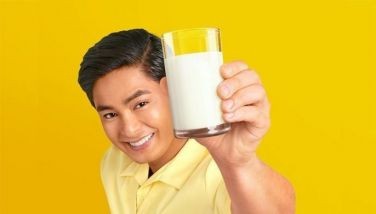Surviving the (kidney) stone age
About one in seven men and one in 15 women will be diagnosed with kidney stones during their lifetime. On a typical day, a number of them will wind up in hospital emergency rooms.
And the number of people with stones is rising, according to kidney stone expert Gary Curhan, MD, of Harvard Medical School. In the US, the incidence of kidney stones jumped roughly by 35 percent between 1990 and 1994, the most recent year studied. “At least part of that rise may be explained by the growing number of Americans who are overweight,” notes Dr. Curhan.
And more people are getting ultrasounds and CT scans for other reasons, adds David Goldfarb, MD, chief of the nephrology division of New York University Medical Center. Those tests can reveal (often-harmless) “silent” stones that wouldn’t otherwise have been noticed.
The Basics
A kidney stone is a solid mass that forms in the kidneys from substances normally found in the urine, typically calcium combined with oxalate or phosphate or urate.
If the crystals remain small enough, they can pass out of the body in the urine without causing discomfort. But some stones become as large as pearls, or even golf balls, and some have jagged surfaces. If they get stuck somewhere along the urinary tract, they can cause serious pain. “If you get recurring kidney stones, you may end up with an infection and kidney damage,” notes Dr. Curhan.
Men are twice as likely to be diagnosed with kidney stones as women. Rates peak in a man’s 40s or early 50s, while “our data suggest that rates are higher for women in their 20s and 30s,” says Dr. Curhan.
Family history matters. Men were two and a half times more likely to have stones if a parent or sibling had them, according to a study of 38,000 men from the Health Professionals Follow-Up Study.
Gender and family you can’t choose. But there are two factors that you may be able to do something about:
• Overweight. The effect of weight on kidney stones is compelling, says Dr. Curhan. He and his colleagues tracked the 46,000 men in the Health Professionals Follow-Up Study I, and the 102,000 younger women in the Nurses’ Health Study II. “In all these studies, the more people weighed, the greater their risk of kidney stones,” says Dr. Curhan. In fact, women who gained more than 35 pounds since young adulthood were about 75 percent more likely to get kidney stones than women who didn’t gain weight, and men who gained more than 35 pounds were about 40 percent more likely. That’s no surprise. Researchers know that overweight people excrete more calcium and oxalate in their urine, which increases the risk of stones.
• Diabetes. In the two Nurses’ Health Studies, women who had been diagnosed with diabetes were 30 to 60 percent more likely to develop kidney stones than women who hadn’t been diagnosed. “We don’t know for certain why,” says Dr. Curhan, “but a lot of things happen when people become insulin-resistant and diabetic. The ability of the kidneys to excrete acid changes, which affects the acidity of the urine, for one thing. And that could affect the formation of stones.
More to come?
”Most people will pass their kidney stones spontaneously and won’t wind up in the operating room,” says Dr. Goldfarb. “But having kidney stones carries a greater risk of developing hypertension later,” says Dr. Curhan. “We don’t know why. It’s possible that both have the same underlying cause.” It’s also possible that some treatments for stones damage the kidneys and lead to a higher blood pressure.
“People with kidney stones are also more likely to suffer from osteoporosis,” says Dr. Curhan. “They often are losing excessive calcium in their urine, and that calcium tends to come from their bones.”
Bottom line: Kidney stones may not be an isolated problem. “I tell my patients that the kidney stones which brought them to my office may be the least of their problems, and that the stones are a harbinger of their increased risk for diabetes, high blood pressure, and osteoporosis,” says Dr. Goldfarb. “Having a first kidney stone is often a reason to be screened for those other diseases.”
Stones In Concert
“Once someone has suffered a kidney stone, they should recognize that much can be done to prevent more from forming,” says Dr. Curhan. “First, you should find a urologist or nephrologist who’s willing to make a long-term investment in trying to prevent you from getting recurrent kidney stones and who has experience in doing that.” Most plans include one or more of the following:
• Drink lots of fluids. “Crystals form when the urine gets too concentrated,” says Dr. Curhan. “If people drink too little, their urine becomes more concentrated and they’re more likely to have stones.” Among 200 Italians who had been diagnosed with a first kidney stone, those who were counseled to drink eight eight-ounce glasses of water a day were less than half as likely to have more stones over the next five years as those who weren’t told to drink more.
• Don’t cut calcium. Kidney stones are mostly calcium, so it’s no surprise that, for years, doctors told their patients with stones to consume less calcium. “That was wrong,” says Dr. Curhan, who was the first researcher to find that calcium in food actually reduces the risk of stones, at least in women and in men under 60. (It seems there is no effect in older men.) In a five-year trial in Italian men (average age: 45) who had at least one kidney stone, those who were assigned to a diet containing 1,200 mg. of calcium a day were half as likely to be diagnosed with a new stone as those who ate a daily diet containing only 400 mg. of calcium. (The US National Academy of Sciences’ Institute of Medicine recommends that men and women over 50 consume 1,200 mg. of calcium a day.) Calcium supplements don’t appear to reduce kidney stone risk for anyone, and, in one study, slightly increased the (low) risk in women over 50. The calcium in food may lower the risk of stones by binding oxalate in the GI tract. The bound oxalate is excreted in the stool, which leaves less oxalate to be absorbed into the blood and later excreted in the urine. Getting more calcium may not help as much, though, it you consume more salt. The more salt you eat, the more calcium you excrete in your urine.
• Coffee, yes. Grapefruit juice, no. “The epidemiological studies consistently show that coffee drinkers have fewer stones,” says Dr. Goldfarb. “We did a study in twins in which we found that if one twin had a kidney stone, that twin was much less likely to be a big coffee drinker.”
With one exception, citrus juices also help, because they increase the citrate content and reduce the acidity of the urine, both of which lessen the chances of stones forming, says Dr. Goldfarb. “But the epidemiological studies consistently show that both men and women who drink a lot of grapefruit juice have more kidney stones,” he adds. Researchers don’t know why.
Softdrinks don’t seem to have an impact, but cranberry juice does. “Cranberry juice has oxalate in it,” says Dr. Goldfarb, “so we don’t recommend it for patients.” One of the most common types of kidney stones is calcium bound to oxalic acid. (High-oxalate foods include spinach, rhubarb, almonds, baked potato with skin, bulgur, beets, and navy beans.)
• Don’t overdo vitamin C. Oxalic acid also explains why some kidney stone experts recommend against taking megadoses of vitamin C. Some of the vitamin is metabolized to oxalic acid in the body. In three studies that gave a total of 139 people either 1,000 or 2,000 mg. a day of vitamin C for three to six days, those taking 2,000 mg. had a higher oxalate level in their urine, whether or not they had a history of kidney stones.
In the Philippines, where many people have elevated uric acid level in their blood, the incidence of kidney urate stones is also relatively higher compared to those in other countries. That’s another reason, aside from preventing gouty arthritis in your joints, of keeping your blood uric acid level at a normal level.



















